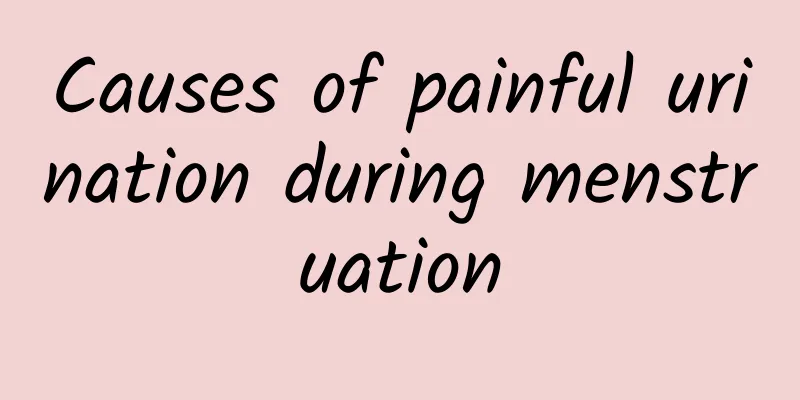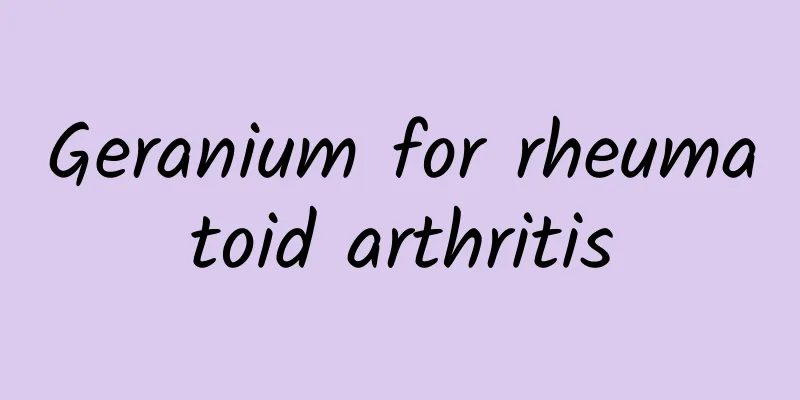Causes of painful urination during menstruation

|
If women experience stinging pain when urinating during their menstrual period, they should pay attention to this situation. There are many reasons for this situation, which may be caused by some gynecological diseases. For example, if a urethral infection occurs, it often causes adverse stimulation and stinging symptoms. In addition, vaginitis and some other gynecological diseases may cause such phenomena, so it should be taken seriously. 1 Urinary tract infection Urinary tract infection in women can cause stinging pain when urinating, in addition to other symptoms such as frequent urination, urgency, turbid urine and even hematuria. Solution: 1. Keep it clean. After suffering from a urinary tract infection, special attention should be paid to keeping the skin of the perineum clean. Women, especially during menstruation, should increase the frequency of washing. During menstruation and illness, bathing in a tub is prohibited. Shower frequently and change underwear in time. 2. Drink more water. Patients with urinary tract infection must drink more water, do not hold urine, and detoxify. 3. Seek timely treatment. Tell your doctor your symptoms clearly. Don’t be embarrassed to talk. You should describe to the doctor what happened since you became ill, whether you have taken any antibiotics, whether there are any accompanying symptoms, etc. You may need to go for further examinations, such as urine tests, imaging examinations, etc. 2 Vaginitis Vaginitis is a common gynecological inflammation in women. It can also cause women to experience a stinging sensation when urinating. In addition, there are symptoms such as vaginal mucosal congestion, abnormal leucorrhea, and vulvar itching. Countermeasures: Vaginitis is divided into bacterial vaginitis, candidal vaginitis, Trichomonas vaginitis, senile vaginitis, etc. Different types have different treatments, so you must check what type of vaginitis you have and then treat it symptomatically. 3. Cystitis Cystitis is mainly caused by specific and nonspecific bacterial infections. Common symptoms include frequent urination, urgency, lower abdominal pain, painful urination, hematuria, etc. Countermeasures: 1. General treatment includes proper rest, drinking plenty of water to increase urine volume, paying attention to nutrition, avoiding irritating foods, and giving antispasmodics to patients with obvious bladder irritation symptoms to relieve symptoms. 2. Observe that patients with asymptomatic bacteriuria in some special cases do not need routine antimicrobial treatment and their condition needs to be closely monitored. 3. Antimicrobial treatment Antimicrobial treatment is the main treatment for urinary tract infection. It is recommended to select medication based on drug sensitivity tests. 4 Nephritis The main symptoms of nephritis are frequent, urgent and painful urination, fatigue, low back pain, poor appetite, gross hematuria, edema, hypertension, abnormal renal function, decreased urine volume (oliguria in some patients), congestive heart failure, etc. How to deal with it: Pay more attention in daily life, including avoiding fatigue, eliminating inducements such as infection, avoiding contact with nephrotoxic drugs or poisons, adopting a healthy lifestyle (such as quitting smoking, exercising moderately and controlling emotions, etc.) and a reasonable diet. |
<<: What is the reason for pain in the posterior tendon of the foot
>>: Is cloudy urine normal during ovulation?
Recommend
How to tell if you have mites on your face
Mites are a common parasite that feed on human da...
Can washing your hair with ginger water help hair growth?
Washing your hair with ginger water actually has ...
What fruits will help constipation?
Constipation is a very common problem. It is very...
Is it better to lie flat or sideways after childbirth? Recommended correct sleeping position after childbirth
Women need to stay in bed after giving birth, dur...
What causes stiff hands and feet?
Stiffness in the hands and feet is mostly caused ...
What to do if you feel chest tightness and shortness of breath during early pregnancy
After pregnancy, many expectant mothers will be e...
What is laryngitis?
Many people do not have a particularly good under...
How to treat toenail fungus
Onychomycosis is actually onychomycosis. Onychomy...
Symptoms of chronic mumps
Chronic mumps was formerly called chronic suppura...
Symptoms of knee tendinitis
There are many types of knee tendinitis, but they...
What to eat after mole removal
Moles are quite common in our daily life and are ...
The center line of the teeth causes the mouth to be crooked
Almost everyone has the problem of misaligned tee...
What is blood in stool?
When the human body is normal, there will be no a...
The efficacy and action points of Scrophularia
Adenophora Root is a medicine that can both nouri...
8-year-old child walks on tiptoes
For an eight-year-old child, if he still walks on...









